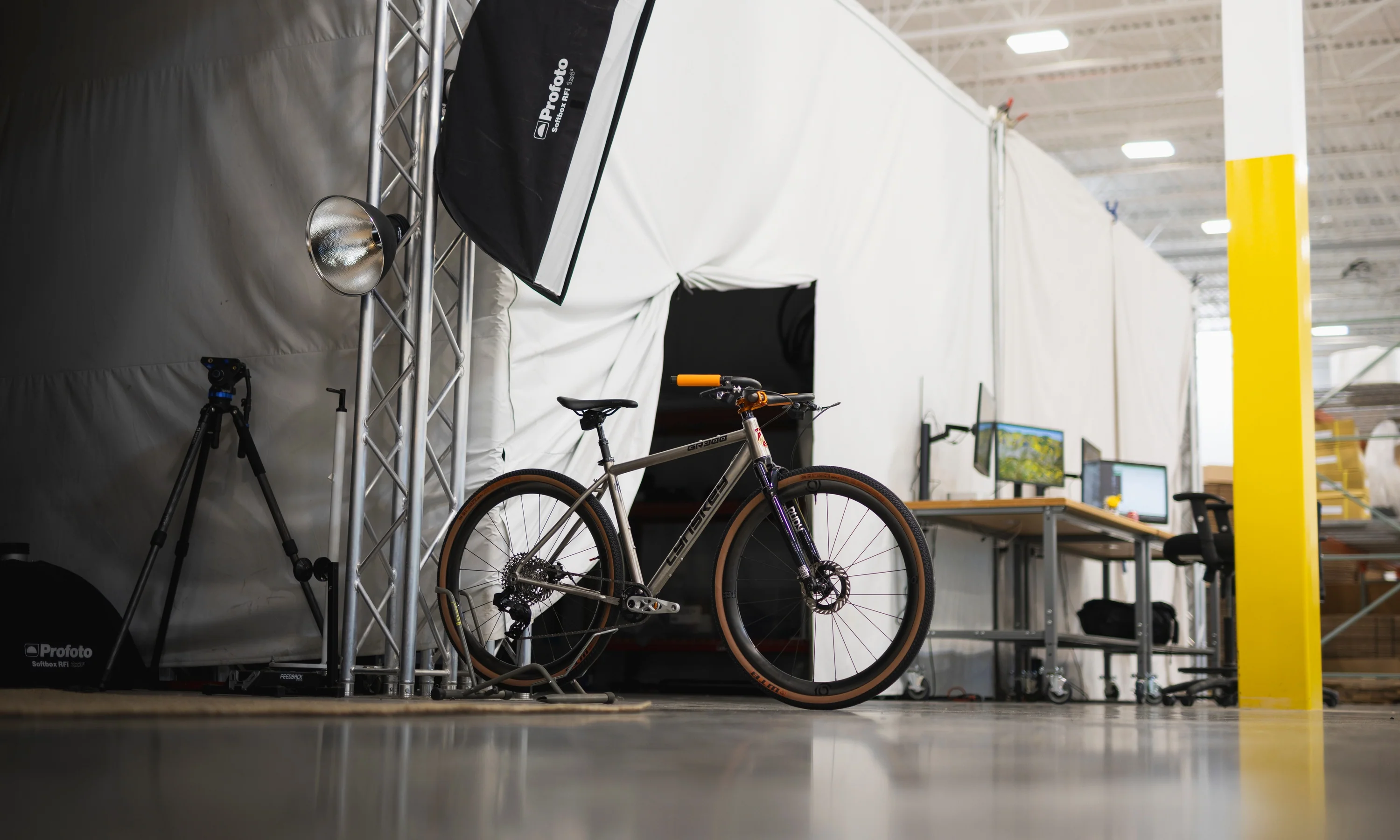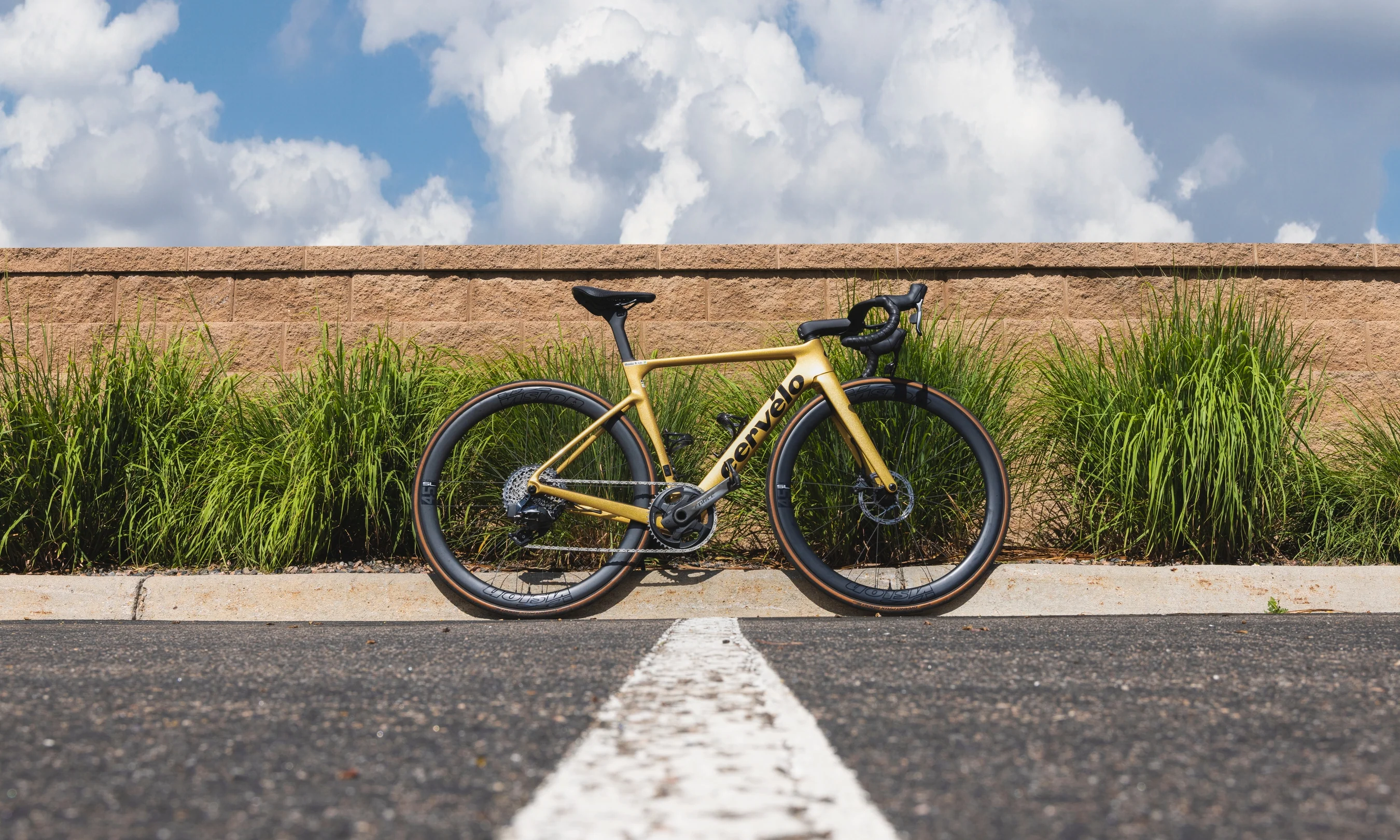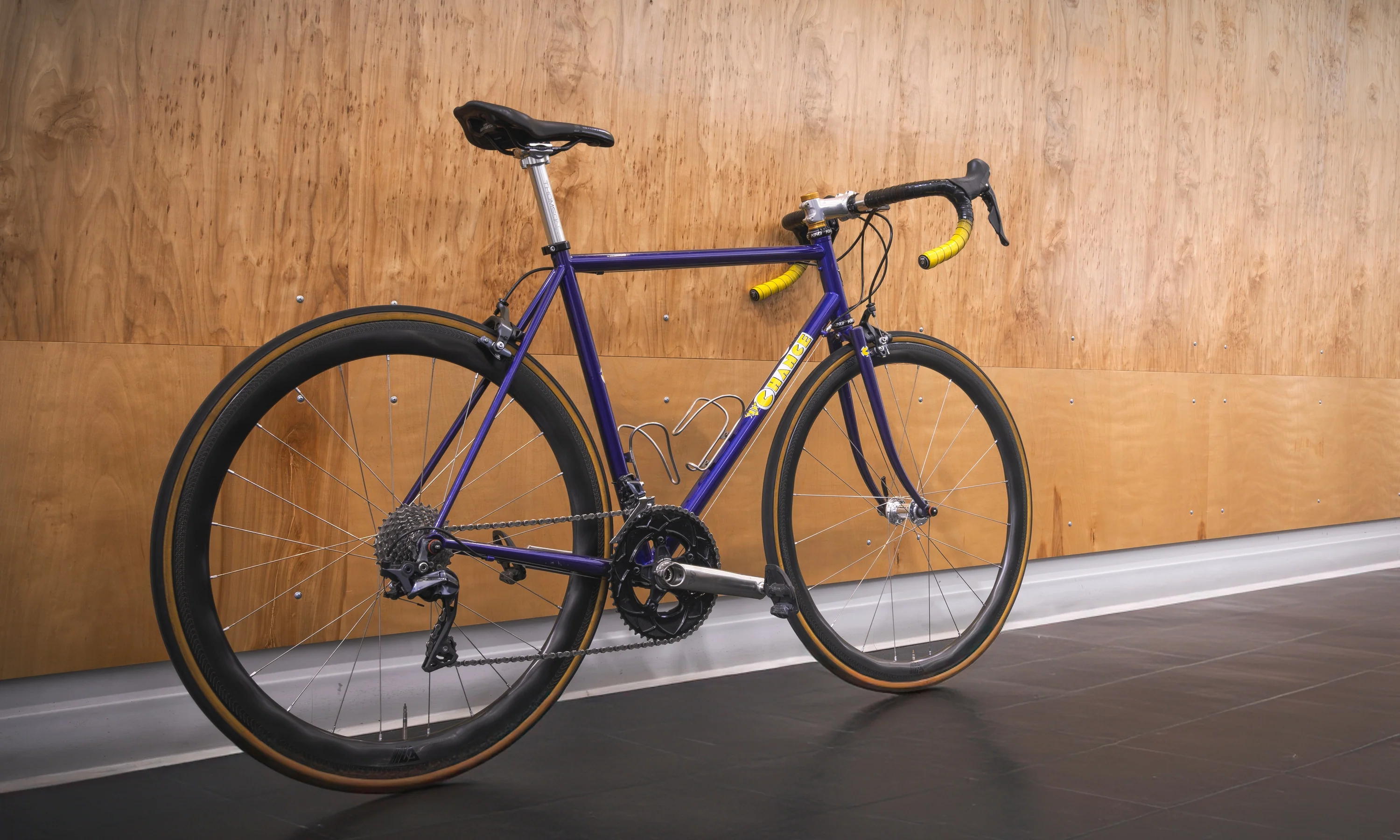You know a bike is “special” when people start messaging each other to “check out this thing.” This Lynskey GR300 caused a bit of a stir when one of our mechanics got it in his stand. A group of hecklers stood around it, marveling at the interesting choices the previous owner made.
Our crew was pretty split over this bike. Some thought it was brilliant. Others thought it was a travesty. I’ll quote some TPC employees to give you an idea of the range of opinions we had about this bike:
- “I’d buy this thing just to hang it on my wall. It’s a work of art.” - Me
- “I can shred on this.” - Andy H, Senior Ride Guide
- “This thing’s a ‘wheel of fortune’ build. Spin a wheel, install a part.” - Chris G, Creative Production Manager
- “Huh…” - Steve G, Warehouse Manager
- “I’d buy this thing just to save anyone else from buying it. It’s horrifying.” - Matt M, Senior Ride Guide
Whatever you think, this bike is definitely a head-turner. Let’s take a closer look at this curious build.
The Lynskey GR300 Frame

First, I do want to call out the frame. The Lynskey family has been building titanium bikes in Chattanooga, Tennessee for 40 years. They rose to prominence as the builders behind another legendary American brand — Litespeed. They sold Litespeed in 1999, but returned to the bike world with their namesake brand in 2005.
 I actually owned the predecessor to the GR300, the GR270, and it was my gravel race bike from 2019-2022.
I actually owned the predecessor to the GR300, the GR270, and it was my gravel race bike from 2019-2022.
Lynskey doesn’t get the same recognition as boutique titanium framebuilders like Mosaic, Firefly, or No. 22, but to me, they’re still one of the best in the business. My favorite thing is that their frames don’t cost an arm and a leg to get! An Internally routed GR300 titanium frame currently retails for $1,575.00. An externally routed frame is even less. That’s a fraction of what you’d pay for a boutique titanium frame.
Build a Bike Workshop
The best part of buying a frameset is that it gives you — the bike nerd — the ability to build up your bike any way you want it. The previous owner of this GR300 clearly took advantage of that. Here are the highlights:
- SRAM RED AXS XPLR drivetrain w/ Eagle AXS controller
- 5DEV R-Spec Alloy crankset - 155mm
- RockShox Rudy Ultimate suspension fork - 30mm
- RockShox Reverb AXS XPLR dropper post - 50mm
- Paul Components Klamper brakes w/ Paul Components Canti Levers
- Whisky Parts Co. Winston Bar
- Industry Nine A35 stem
- Industry Nine Solix SL AR40c carbon wheels

Note the exposed bar at the ends. We had to move the grips back to cover it. Our guess is the previous owner ran some sort of clip-on bar-end.
The Whiskey Winston handlebars caused the most controversy among our team. This style of handlebar is known as a “mustache bar.” Mustache bars can be run with road, mountain, or bar-end controls, and they’re most often found on commuters and touring rigs because they provide a lot of comfort.
The Winston is unique among mustache bars because it’s made of carbon fiber. It’s sporty! Also, the extensions don’t point straight backward like traditional mustache bars. There's a lot of backsweep — 73-degrees according to the specs — which provides a nice, neutral hand position. They’re not as fast as drop bars in gravel racing scenarios. They also don’t provide as much control in rugged terrain. They’re all about comfort, which for some, is the most important thing.

How Guitar Ted set up his Winston bars. Photo: Guitar Ted
I’d like to quote gravel blogger, Guitar Ted, who explains why so few riders use mustache bars on gravel bikes:
“I'll be honest, many recreational drop bar riders really should be on mustache bars. I can also tell you why they are not on mustache bars — because all the cycling marketing you see shows racy drop bar set ups and this is what 'they' tell you is 'cool'. Mustache bars are seen then as weirdo bars for urban freaks that love oddball bikes. That's really a shame. If you've never tried mustache bars, and don't give a rip what people think about you if you were to show up on a group ride with mustache bars, well then.....step this way!”
- Guitar Ted

Beyond the bars, there are plenty more interesting choices with this build. For rough terrain, the 30mm RockShox Rudy gravel suspension fork and RockShox Reverb AXS XPLR dropper post certainly enhance the bikes capabilities.

I tend to expect suspension forks and droppers on gravel bikes that see a lot of chunky roads and singletrack. Again though, I feel like a mustache bar would compromise control on that sort of terrain. I'm guessing that the suspension fork and dropper are likely more for comfort than shredding.

The brake choice is fairly niche. Paul Components Klampers are made in the USA and at $245 per caliper, they’re pretty expensive. They have decent stopping power and I think they’re beautifully machined.

I personally prefer hydraulic disc brakes but some riders prefer mechanical discs for their simplicity and reliability. Maybe that was the primary concern. There’s also the bling factor. American-made brakes on an American-made frame? Yeah, that’s cool.

Then there’s the 5DEV cranks. These 3-piece cranks are machined using AI-optimized design, which allowed the 5DEV engineers to remove as much excess material as possible without compromising strength. The most interesting thing to me is how short the cranks are. At 155mm, they’re much shorter than even the short 165mm cranks that have become trendy in bike racing.
Short cranks reduce your hip angle, which allows you to adopt a more aggressive and aero riding position. With the mustache bars though, that is likely not the goal here. My guess is that it’s to reduce knee strain. Shorter cranks not only reduce hip angle, but they also reduce knee angle. Annecdotally, I’ve notice a reduction in my own knee pain going from 175mm to 170mm cranks, and 165mm cranks are next on my upgrade list.

The alloy 5DEV cranks are also available in even shorter 145mm and 135mm options if you want to go crazy. The 155mm cranks currently installed on this bike still seem like a step too far in my mind, but that’s mostly because I haven’t tried them out. Who knows? Maybe they’ll feel amazing spinning up climbs.

There will be a lot of spinning for sure, because the crank has a tiny 30t chainring. Paired with the 10-44t SRAM XPLR derailleur and cassette, it provides easy gearing that should let you cruise at a leisurely pace on pretty varied terrain. Is it geared low enough for loaded touring or backcountry adventures though? That might depend on your fitness and where you live.
This brings me to my final question…
What Is This Bike For?

Lynskey GR300 Gravel Bike - Small
$2429.99
To me, this bike is interesting because different parts of the build seem to contradict each other. There are nods to the racier side of gravel with the lightweight Industry Nine Solix SL AR40c carbon wheels and the SRAM RED XPLR drivetrain. But the 30t chainring, mechanical disc brakes, suspension fork, and dropper seatpost lean more toward the adventure side of gravel. Then there's the carbon mustache bars — a cherry on top of a very confused gravel sundae.
Is this bike built to go fast? Is it meant to get loaded up with bags for multi-day adventures? Is it only good for cruising to the local pub? I have no idea. To me, this GR300 seems suboptimal for everything. Maybe that was the point?

In the beginning of this post, I called this bike “a work of art.” Was I being sarcastic? Only a little bit.
Art, /ärt/ - noun: the expression or application of human creative skill and imagination.
Ultimately, beauty is in the eye of the beholder. I’m indifferent about the looks or practicality of this bike, but I do think it is a great representation of the “spirit of gravel.” When I say that, I’m not talking about gravel racing, bikepacking, or “vibes.” what I mean is that there is no formula for the “standard” gravel bike. Gravel's still so new that we’ve all just been making it up as we go along.
Really, gravel bikes can be whatever you want them to be. You can have drop bars, flat bars, or... mustache bars. You can ride on skinny slick tires or fat and knobby MTB tires. Want suspension or a dropper post? Sure whatever you want. There are no rules. If it can stay upright on a gravel road, it’s a gravel bike.
So THIS was someone’s vision of gravel, and they successfully brought to life. That’s cool! Does it have a purpose? Does it need one? Maybe the previous owner just built this bike because it’s weird and fun. That’s valid, and I’m tickled that it exists.
























